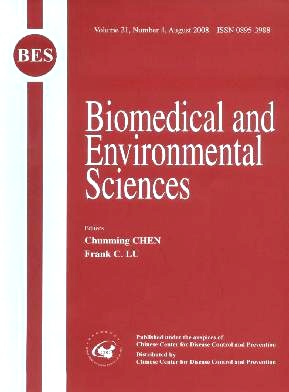Report on Childhood Obesity in China (7)Comparison of NCHS and WGOC
-
Key words:
- Body mass index /
- Childhood obesity /
- Overweight /
- Metabolic syndromes /
- Validity
Abstract: To test the validity of Working Group on Obesity in China (WGOC) reference in screening childhood obesity using obesity-related metabolic syndrome (MS) and its components as disease risk evidence. Methods A total of 2020 adolescents (1007 boys and 1013 girls) aged 14-16 years were sampled in Beijing, China. Anthropometxic and biochemical measurements, as well as blood pressure parameters were available. Prevalence of overweight/obesity and related MS risk factors were analyzed across different body mass index (BMI) categories. The sensitivity and specificity of the WGOC cut-offs were compared with those of National Central Health Statistics (NCHS). Results Significantly high prevalence of MS and its components were found both in the obesity and overweight groups, which were classified by the WGOC and NCHS references. Similar distribution pattern of MS risk factors existed among different BMI categories, hut the frequency and clustering of these factors in the obesity group classified by the NCHS were much higher. Owing to its irrelevant high cut-offs for overweight/obesity (especially for girls since the mid-adolescence), the NCHS reference had a high specificity but a low sensitivity. By contrast, the WGOC reference with a high sensitivity (90.1% for boys and 89.2% for girls) and a relative high specificity (96.4% and 92.8% for obese boys and girls, 78.1% and 68.9% for overweight boys and girls respectively) was more suitable to support the need for early screening, intervention, and treatment of childhood obesity in China. Conclusion High sensitivity is more important than specificity in choosing appropriate screening tools for childhood obesity. Validity test demonstrates that it is rational to use the WGOC reference, established on the basis of the Chinese own reference population as a uniform screening tool for childhood obesity, which can effectively overcome the unnecessary treatment and psychosocial implications of stigmatization caused by misclassification.
| Citation: | YI-QUN XU, CHENG-YE JI, COOPERATIVE STUDY ON CHILDHOOD OBESITY:WORKING GROUP ON OBESITY IN CHINA. Report on Childhood Obesity in China (7)Comparison of NCHS and WGOC[J]. Biomedical and Environmental Sciences, 2008, 21(4): 271-279. |







 Quick Links
Quick Links
 DownLoad:
DownLoad: